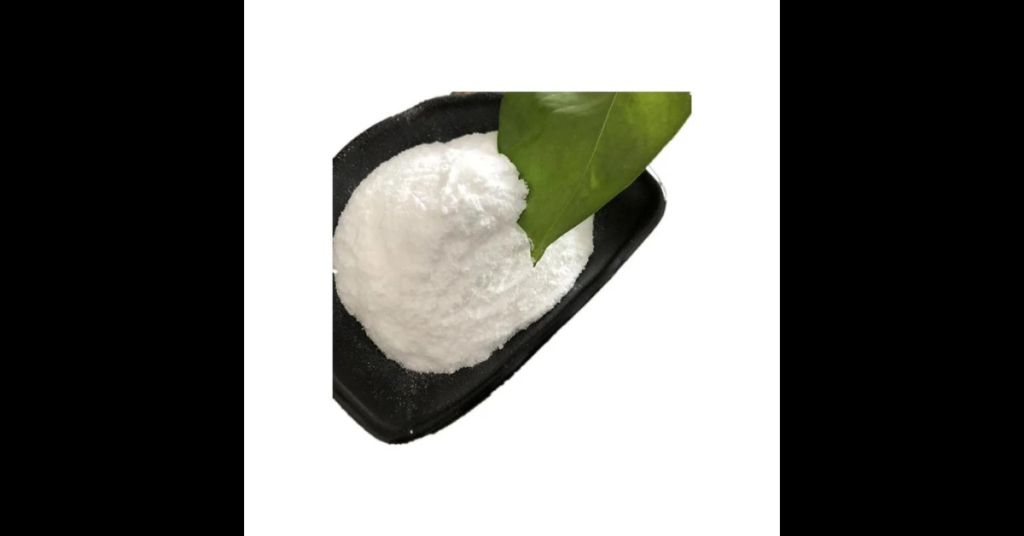Disodium succinate, a versatile food additive, plays a crucial role in the food industry due to its unique properties and applications. This comprehensive guide delves into the origins, production, applications, safety, and regulatory aspects of disodium succinate, providing a detailed overview for those interested in this essential compound Disodium Succinate Food Grade.
Table of Contents
Disodium succinate, known chemically as C4H4Na2O4, is the disodium salt of succinic acid. It is a white, crystalline powder that is highly soluble in water. This compound is widely used in the food industry due to its ability to enhance flavors, stabilize pH levels, and extend the shelf life of various products. As a food additive, it is known by its E number, E363.
Disodium succinate popularity in food processing stems from its multifunctional benefits. It imparts a savory taste, commonly referred to as umami, which enhances the overall flavor profile of foods. Additionally, its buffering properties help maintain the desired pH level in various food products, ensuring stability and consistency.
2. Chemical Composition and Properties
Disodium succinate is derived from succinic acid, a dicarboxylic acid that occurs naturally in various plant and animal tissues. The chemical structure of disodium succinate is characterized by two sodium ions replacing the hydrogen ions of succinic acid. This results in the formation of a salt that is highly soluble in water, making it suitable for a wide range of applications in the food industry.
Chemical Formula: C4H4Na2O4
Molecular Weight: 162.06 g/mol
Appearance: White crystalline powder
Solubility: Highly soluble in water
Melting Point: 300°C (decomposes)
The unique properties of disodium succinate, such as its solubility and stability, make it an ideal ingredient for food processing. It is known for its mild, slightly salty taste, which enhances the umami flavor in foods, making it a popular choice in the production of savory products.
3. Production of Disodium Succinate
Disodium succinate can be produced through various methods, including chemical synthesis and fermentation processes. Each method has its own advantages and is chosen based on the desired purity, cost, and application requirements.
A. Chemical Synthesis
The chemical synthesis of disodium succinate involves the neutralization of succinic acid with sodium hydroxide. The process can be summarized as follows:
- Preparation of Succinic Acid: Succinic acid is prepared through the hydrogenation of maleic acid or by the fermentation of glucose.
- Neutralization: Succinic acid is then neutralized with sodium hydroxide to form disodium succinate.
- Crystallization: The resulting solution is crystallized to obtain pure disodium succinate in its solid form.
- Drying: The crystals are dried to remove any residual moisture.
The chemical synthesis method is widely used due to its simplicity and cost-effectiveness. However, it may require additional purification steps to remove any impurities resulting from the chemical reactions.
B. Fermentation Process
The fermentation process for producing disodium succinate is considered more sustainable and environmentally friendly. This method involves the use of microorganisms to convert renewable raw materials, such as glucose, into succinic acid, which is then neutralized to form disodium succinate. The steps involved in this process include:
- Fermentation: Microorganisms, such as bacteria or yeast, are used to ferment glucose or other sugars to produce succinic acid. The fermentation is carried out under controlled conditions to optimize the yield and purity of the succinic acid.
- Recovery: The succinic acid is recovered from the fermentation broth through filtration and purification processes.
- Neutralization: The purified succinic acid is neutralized with sodium hydroxide to form disodium succinate.
- Crystallization and Drying: The disodium succinate is crystallized and dried to obtain the final product.
The fermentation process offers several advantages, including the use of renewable resources, lower energy consumption, and reduced environmental impact. It is becoming increasingly popular as the food industry moves towards more sustainable production methods.
4. Applications in the Food Industry
Disodium succinate is a versatile ingredient used in various food applications due to its flavor-enhancing properties, pH regulation, and buffering capabilities. Some of the primary applications of disodium succinate in the food industry include:
A. Flavor Enhancer
One of the most notable uses of disodium succinate is as a flavor enhancer. It imparts a savory, umami taste to foods, making it a popular choice in the production of savory products such as soups, sauces, snacks, and processed meats. The umami flavor is often described as the fifth taste, alongside sweet, sour, salty, and bitter. It enhances the overall flavor profile of foods, making them more palatable and enjoyable.
In addition to its umami-enhancing properties, disodium succinate also helps to mask undesirable flavors and enhance the natural flavors of ingredients. This makes it a valuable ingredient in the formulation of various food products.
B. pH Regulator
Disodium succinate acts as an effective pH regulator in food products. It helps maintain the desired pH level, ensuring stability and consistency in the final product. This is particularly important in the production of beverages, dairy products, and baked goods, where pH control is essential for maintaining quality and preventing spoilage.
By stabilizing the pH levels, disodium succinate helps improve the texture, taste, and shelf life of food products. It also aids in the prevention of microbial growth, contributing to the overall safety and quality of the food.
C. Buffering Agent
As a buffering agent, disodium succinate helps maintain the desired pH level in various food products. This is particularly important in processed foods, where maintaining a stable pH is crucial for preserving the quality and preventing spoilage. Disodium succinate is commonly used in the formulation of sauces, dressings, and marinades to ensure the desired acidity and flavor profile are maintained.
D. Shelf Life Extender
Disodium succinate also plays a role in extending the shelf life of food products. Its buffering properties help prevent the growth of harmful microorganisms, thereby enhancing the preservation of perishable items. This is particularly beneficial in the production of processed meats, dairy products, and beverages, where maintaining freshness and quality is of utmost importance.
5. Nutritional and Health Benefits
Beyond its functional properties in food production, disodium succinate also offers several nutritional and health benefits. These benefits stem from its role in metabolism and its potential antioxidant properties.
A. Role in Metabolism
Disodium succinate is involved in various metabolic pathways in the body, including the citric acid cycle (Krebs cycle). The citric acid cycle is a crucial metabolic pathway that generates energy through the oxidation of acetyl-CoA derived from carbohydrates, fats, and proteins. As a component of the citric acid cycle, disodium succinate contributes to the production of ATP (adenosine triphosphate), the primary energy currency of cells.
By participating in energy metabolism, disodium succinate supports the overall functioning and energy balance of the body. This makes it an essential component in maintaining metabolic health and supporting physical performance.
B. Antioxidant Properties
Some studies suggest that disodium succinate may exhibit antioxidant properties. Antioxidants are compounds that help protect the body against oxidative stress and damage caused by free radicals. Free radicals are unstable molecules that can damage cells and contribute to various chronic diseases and aging processes.
The potential antioxidant properties of disodium succinate may help mitigate oxidative stress and support overall health and well-being. However, more research is needed to fully understand the extent of its antioxidant effects and their implications for human health.
6. Safety and Regulatory Aspects
Disodium succinate is considered safe for consumption when used in accordance with regulatory guidelines. It has been evaluated and approved by various food safety authorities around the world. Understanding the regulatory aspects and safety assessments of disodium succinate is crucial for its responsible use in food production.
A. Regulatory Approvals
Disodium succinate is approved for use as a food additive by several regulatory agencies, including:
- Food and Drug Administration (FDA): In the United States, disodium succinate is listed as Generally Recognized As Safe (GRAS) for its intended use in food products.
- European Food Safety Authority (EFSA): In the European Union, disodium succinate is approved as a food additive under the E number E363.
- Joint FAO/WHO Expert Committee on Food Additives (JECFA): JECFA has evaluated the safety of disodium succinate and established acceptable daily intake (ADI) levels for its use in food Disodium Succinate Food Grade.
These approvals are based on extensive safety assessments and scientific evidence demonstrating the compound’s safety when used within recommended limits.
B. Safety Assessments
Safety assessments of disodium succinate involve evaluating its potential effects on human health through toxicological studies and dietary exposure assessments. Key considerations in these assessments include:
- Toxicity Studies: Toxicity studies evaluate the potential harmful effects of disodium succinate on various organs and systems in the body. These studies help determine the safe levels of consumption and identify any potential risks associated with its use.
- Dietary Exposure: Dietary exposure assessments estimate the amount of disodium succinate consumed through food products and compare it to the established ADI levels. This helps ensure that the intake of disodium succinate remains within safe limits.
Based on these assessments, regulatory agencies establish guidelines and usage limits for disodium succinate in food products to ensure consumer safety Disodium Succinate Food Grade.
7. Market Trends and Future Prospects
The demand for disodium succinate in the food industry is driven by its multifunctional benefits and its role in enhancing the flavor and quality of food products. Understanding the market trends and future prospects of disodium succinate provides valuable insights into its continued relevance and potential growth Disodium Succinate Food Grade.
A. Market Growth
The global market for disodium succinate is experiencing steady growth, driven by the increasing demand for processed and convenience foods. Key factors contributing to market growth include:
- Rising Consumer Demand: Consumers are increasingly seeking flavorful and convenient food products, driving the demand for additives like disodium succinate that enhance taste and quality.
- Growing Food Processing Industry: The expanding food processing industry, particularly in emerging markets, is contributing to the increased use of disodium succinate in various applications.
- Health and Wellness Trends: The growing emphasis on health and wellness is driving the demand for food additives that offer functional benefits, such as flavor enhancement and pH regulation Disodium Succinate Food Grade.
B. Innovations and Developments
Innovation and technological advancements in the production and application of disodium succinate are shaping its future prospects. Some notable developments include:
- Sustainable Production Methods: The adoption of sustainable production methods, such as fermentation processes, is gaining traction as the food industry moves towards more environmentally friendly practices.
- New Applications: Ongoing research and development efforts are exploring new applications of disodium succinate in food products, including its potential use in plant-based and alternative protein products.
- Enhanced Formulations: Advances in formulation technology are enabling the development of enhanced disodium succinate formulations with improved solubility, stability, and functionality.
These innovations and developments are expected to further drive the demand for disodium succinate and expand its applications in the food industry.
8. Conclusion
Disodium succinate is a versatile and valuable food additive that plays a crucial role in the food industry. Its unique properties, including flavor enhancement, pH regulation, and buffering capabilities, make it an essential ingredient in various food products. Additionally, its nutritional and health benefits, coupled with its safety and regulatory approvals, underscore its importance in modern food production Disodium Succinate Food Grade.







